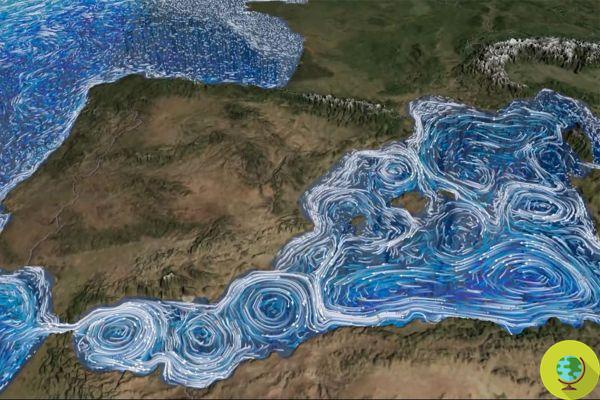
Thanks to the Nemo experiment, INFN experts discovered the existence of huge underwater vortices in the depths of the Mediterranean
He is about to end up run over, his mother saves himMediterranean. In the depths of the Mare Nostrum there are eddies up to 10 kilometers in size. And to highlight its existence were the neutrinos. Leading candidates to illustrate the wonders of heaven and reveal what happened at origins of the universe, the neutrinos would have helped the experts ofNational Institute of Nuclear Physics (INFN) to discover that the Mediterranean is home to these huge eddies.
According to the scientists, these are large masses of water with a diameter of about 10 km, located at a depth of about 3000 meters, which move at a speed of 3 centimeters per second.
The discovery was made thanks to the oceanographic measurements carried out in the context of theNEMO experiment (Neutrino Mediterranean Observatory), an INFN project aimed at creating an instrument capable of locating the passage of high-energy neutrinos from deep space into the depths of the sea.
Where to look? The NEMO experiment placed some instruments for measuring currents and temperature at a depth of 3500 meters in the Ionian Sea. From the recorded data, Angelo Rubino, oceanographer ofCa 'Foscari University of Venice together with his collaborators, he discovered the existence of these enormous flows of water completely unexpected given that the Mediterranean is a closed basin.
What the experts will now try to understand is theorigin of these vortices. According to some, it could be local but “a remote origin linked to fluid dynamic instability processes in the waters of the Adriatic Sea and / or the Aegean Sea is not excluded”.
According to the experts who followed the experiment, these processes would give rise to "rotating and lentiform structures able to travel hundreds of kilometers without losing their dynamic and hydrographic characteristics".
Finally, after carrying out some numerical simulations and analyzing the data, the scientists found that vortices could play a leading role in climatic variability of the Mediterranean Sea. Five years ago the NEMO experiment, conducted with an acoustic apparatus placed at a depth of 2000 meters in front of Catania, had revealed an equally unexpected presence, for the quantity of subjects, of cetaceans and in particular of sperm whales in that sea area.
The research was published on Nature Communications.
Francesca Mancuso


























